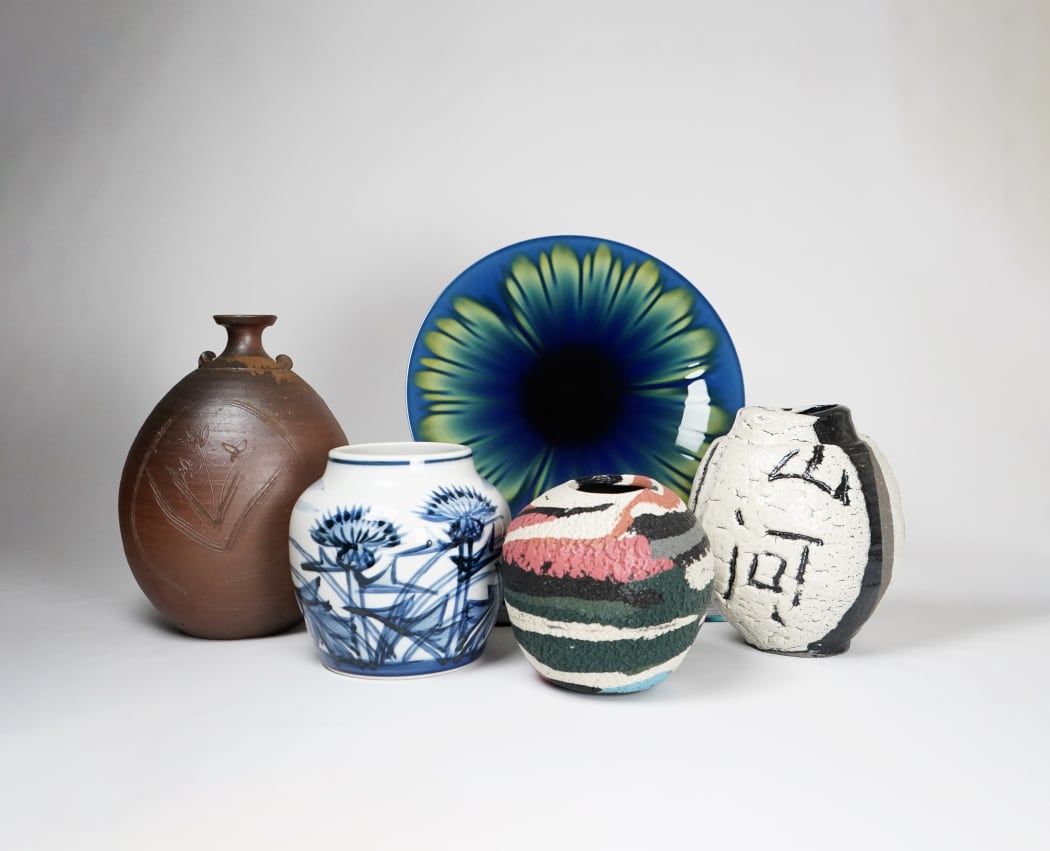
If there is one thing that gives Japanese craftspeople almost legendary status, both within and outside Japan, it is their appointment as a ‘Living National Treasure’. This term has become ubiquitous, and endows the awardee with a status that elevates their craft to a formal, nationally recognized level. Strictly speaking, the appointment is officially as ‘Preservers of Important Intangible Cultural Properties’ (Juyo Mukei Bunkazai Hojisha). However, the colloquial term is Living National Treasure (Ningen Kokuhou or LNT) used in Japan and elsewhere. As its correct title suggests, the intention of the award is to preserve ‘intangible’ (artistic) skills for the benefit of the nation. To achieve this, the Minister of Education, Culture, Sports, Science and Technology designates senior crafts people to be Living National Treasures. This covers all craft forms. The category also limits the number of Treasures to accommodate budgetary concerns, as each Living National Treasure gets an annual stipend of 2 million Yen. The number of treasures is also determined across all art forms, and there can only be one designated LNT at a time for each skill.
The origins of the Living National Treasures award dates back to the late 19th century, when the Meiji Emperor instituted the ‘Artists to the Imperial Household’ (Teishitsu gigei’in) system in 1890. This occurred because the government realised that Japanese arts and craft made a distinct contribution to the reputation of the nation and its economy. The timing of it was also significant: The Meiji Emperor invested in these new policies just as these artistic skills were in danger of being lost as a consequence of the Meiji era reforms. This system was in place until 1944, during which seventy-nine artists were awarded. Of this number, only five ceramicists became an Artist to the Imperial Household: Seifu Yohei III (1851-1914) in 1893, Miyagawa (Makuzu) Kozan (1842-1916) in 1896, Suwa Sozan I (1852-1922), Ito Tozan I (1846-1920) in 1917, and finally, Itaya Hazan (1872-1963) in 1934.
In the post-war reconstruction, it was once again recognized that a similar award was advantageous for the nation for cultural reasons: certain skills were under threat of extinction. This brought about the enactment of the 1950 Law for the Protection of Cultural Properties, which emphasised the preservation of specific craft skills. This was slightly altered in 1954 to allow the designation of individuals and groups. The public directly associated the skill with the person, thinking that the person holding the title was the Living National Treasure, rather than the skill they practiced. The law not only awarded the person, but designated their skill and craft: It recognized both the skill and its holder as intangible cultural properties. Again, the Government of the day recognized the value of preserving the crafts. In particular, it recognized the value of maintaining craft skills of national significance.
While this is the legal framework for Living National Treasures, the actual criteria and assessment that underpins the appointment often indicates other factors at play. Some recipients were awarded specifically because their skill needed preservation, but others were awarded to see that a category of the nation’s craftspeople were represented. This is obvious from the start when, in 1955, Hamada Shoji (1894-1978) was awarded for his contribution to mingei ceramics whereas Tomimoto Kenkichi (1886-1963) was awarded for his skill in on-glaze enamelling (iro-e jiki). In reality both contribute to the maintenance of a tradition and that in itself achieves the desired outcome of the legislation.
The success of this system is indicated by the international recognition it has brought Japan. The system has also been imitated in China, Korea, The Philippines, Australia and Ireland, with adaptations to accommodate each nation’s respective cultural contexts. The scheme has been extended by some Japanese Prefectures, who have nominated their own holders of intangible cultural properties. These are regional awards for their craftspeople for their achievements and contributions to their prefecture. However, though these are not a national, imperial recognition in the same way the Living National Treasure designation is, they are still significant and lifetime achievements for many Japanese craftspeople.
It is worth noting that for all its benefits to the nominated craftspeople and to the Japanese Government for their enlightened patronage, there are also critics of the Living National Treasure system. There is also debate about the politics behind the award. In particular, critics have scrutinized exactly how the award is nominated, given that there are great ceramicists and other major crafts people who have not been recognised. Among the ceramicists, for example, Kamoda Shoji (1933-1983) and Wada Morihiro (1947-2007) quickly come to mind and it would be easy to list a dozen living ceramicists who have not been awarded. Then, of course, there were the likes of Kitaoji Rosanjin (1883-1959) and Kawai Kanjiro (1890-1966) who choose to not accept their nomination for various reasons, or prominent ceramicists like Kato Tokuro (1898-1985) to whom it was never offered. The 1955 Law is applied pragmatically and in doing so, it has fallen short in some ways. Ultimately, the award creates a conversation about the importance of craft, and ultimately brings about recognition of the crafts in national and international discourse.
Click here to see the exhibition









